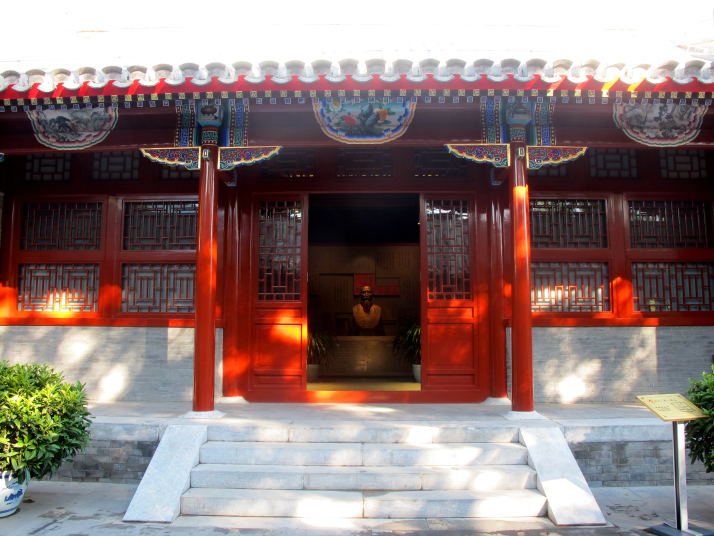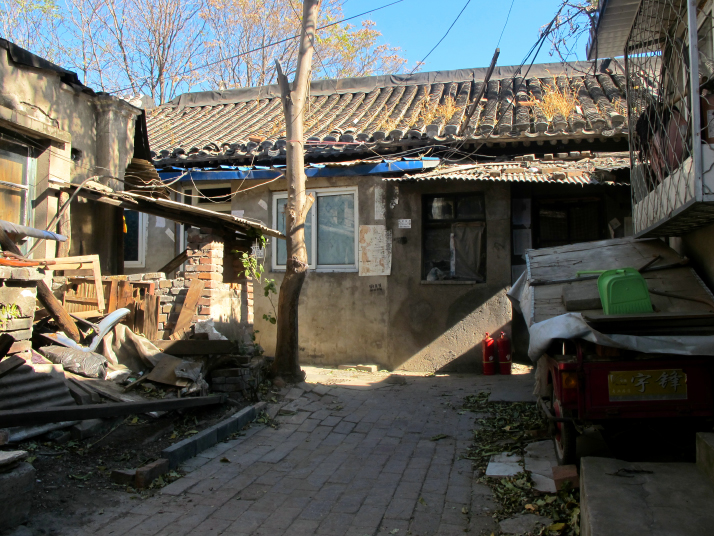|
||||||
|
||||||
| Home Nation World Business Opinion Lifestyle China Focus ChinAfrica Multimedia Columnists Documents Special Reports |
|
||||||
|
||||||
| Home Nation World Business Opinion Lifestyle China Focus ChinAfrica Multimedia Columnists Documents Special Reports |
| Nation |
| Restoring the Past |
| Former residences of notable figures are in need of further protection and better utilization |
| By Lu Yan & Craig Crowther | NO. 45 NOVEMBER 1, 2018 |
 The former residence of Shen Jiaben, Chinese politician and jurist, after renovation in Beijing (LU YAN)
Known as the father of China's modern legal structure, Shen Jiaben (1840-1913) is a figure who looms large in Chinese history and culture. During his tenure as the secretary of enactment in the late Qing Dynasty (1644-1911), Shen presided over the drafting and revision of many laws of that period. As chief architect of the 1905 revision of the Qing Code, the legal code of the Qing Dynasty, Shen abolished several inhumane methods of punishment and execution. He was also instrumental in uniting the heritage of traditional Chinese legal culture with foreign codes and practices, a pioneer in overhauling and reforming the judicial system in China. Over 100 years since his death, today's China would be unrecognizable to Shen. But far from being designated to the closet of history, he is once again being celebrated for his contributions to society. His former residence in Xicheng District, located in the heart of Beijing, opened to the public after 15 months of restoration. Before the renovations, the historical value of the 1,700-square-meter courtyard had dissipated and it was being used for residential housing. The restoration work acted as a catalyst for a wide program of historical preservation in Xicheng and has inspired the authorities of other Beijing districts to take action. Keeping history alive Since 2014 Xicheng has implemented several action plans on protection and the proper use of sites with a cultural legacy. "Thanks to the newly renovated museum, now I have a better understanding of and admiration for Shen and what he did for our country," Liu Meixiu, a 75-year-old retiree, told Beijing Review while visiting Shen's former residence with her husband. A former resident of the neighborhood before the renovation, Liu waxed lyrical about her memories of the bustling courtyard back then. She described the makeshift huts that were used as kitchens and storage rooms, leaving short and narrow passageways for people to walk around. "I didn't know the courtyard was a historical site at that time," Liu said. According to the Cultural Commission of Xicheng, before the renovation, 46 households lived in Shen's former residence—a quadrangle courtyard, or siheyuan in Chinese, surrounded by buildings on all four sides. To protect the houses and improve the living conditions of the residents there, the district authority decided to make an alteration. Based on an on-the-spot investigation and surveys, as well as the Law of Cultural Relics, Law of Property and other relevant regulations, they decided to restore the property to its former glory. To protect the historical site, the residents agreed to terminate their contracts. Compensation and a resettlement package were provided by the government. Because of the remarkable history behind the site, it was decided to restore the house and turn it into a tourist attraction, offering a unique glimpse into Beijing's illustrious past. After 15 months of work, the quadrangle courtyard where Shen lived for 13 years before his death has recaptured the grandeur of a period many locals thought lost to time. The residence is unrecognizable from what it was before the restoration and is now a vibrant museum celebrating one of China's most prominent legal figures who revolutionized the legal system. Traditional artifacts, written introductions, and historical records dominate but the museum also embraces multimedia technology. One such example is a stereoscopic film, another is touch screens to reproduce historical events, fully embracing the modern museum-going experience in a bid to capture a slice of China's history. Since its opening, the museum is proving a success with the public with thousands of visitors each month. The protection of former residences of notable figures is an ongoing issue for Beijing authorities and residents. In another plan announced by the Xicheng authorities in 2016, by 2020, approximately 50 government-owned properties with cultural and historical value would be vacated and renovated. "Cultural relic protection is an urgent task for us. We hope all sectors of society can participate in the endeavor," Sun Jinsong, head of the Cultural Commission of Xicheng, told Beijing Daily.  The former Beijing residence of Tan Sitong, famous Chinese politician, thinker and reformist in the late Qing Dynasty (1644-1911) (LU YAN)
Challenges ahead Not all structures of historical importance have been successfully renovated. Also located in Xicheng, the former residence of Tan Sitong, a famous Chinese politician, philosopher and reformist in the late Qing Dynasty, is in a dilapidated state. Since the house was listed as a city-level culture relic, some residents moved out but some still remain, becoming one of the challenges of the renovation work. Zhang Ding, 61, lives in Tan's old living room. He told Beijing Review that more than half of the 43 households have voluntarily moved out of the courtyard. "I fully support the idea of protecting historical sites and former residences of important figures. However, it's hard to leave the place I have lived in for the last two decades," Zhang said. He said the familiar living environment, convenient transportation links, and rapport with neighbors are some of the major reasons for his reluctance to move out. The concerns and reluctance of the residents to move out are only one of the difficulties to overcome. The related law should be improved. "We still need to clarify the definition and legal status of former residences," Tan Zhihong, an offspring of Tan Sitong, told Legal Daily. He added that besides the department of cultural relic protection, ordinary people, experts, and non-governmental organization should also be a part of the certification process to make it a more collaborative and fairer process. Liu Yang, Vice President of Beijing History, Geography, and Folk Custom Academy, said it is unnecessary to rebuild all former residences of Chinese celebrities, politicians and other famous figures as there are a number of such houses already. "If the residence is properly preserved by its dwellers, this is an acceptable alternative method of preservation," Liu said. With space being a premium commodity in Beijing, relocating communities for cultural restorations is a contentious topic among local residents. While some are content to take the compensation and move, others value the lives they have created in their neighborhoods. But without a project to preserve and restore these points of historical and cultural reference, their stories and the lives of those who lived there risk being lost forever. Copyedited by Craig Crowther Comments to luyan@bjreview.com |
About Us | Contact Us | Advertise with Us | Subscribe
|
||
| Copyright Beijing Review All rights reserved 京ICP备08005356号 京公网安备110102005860号 |